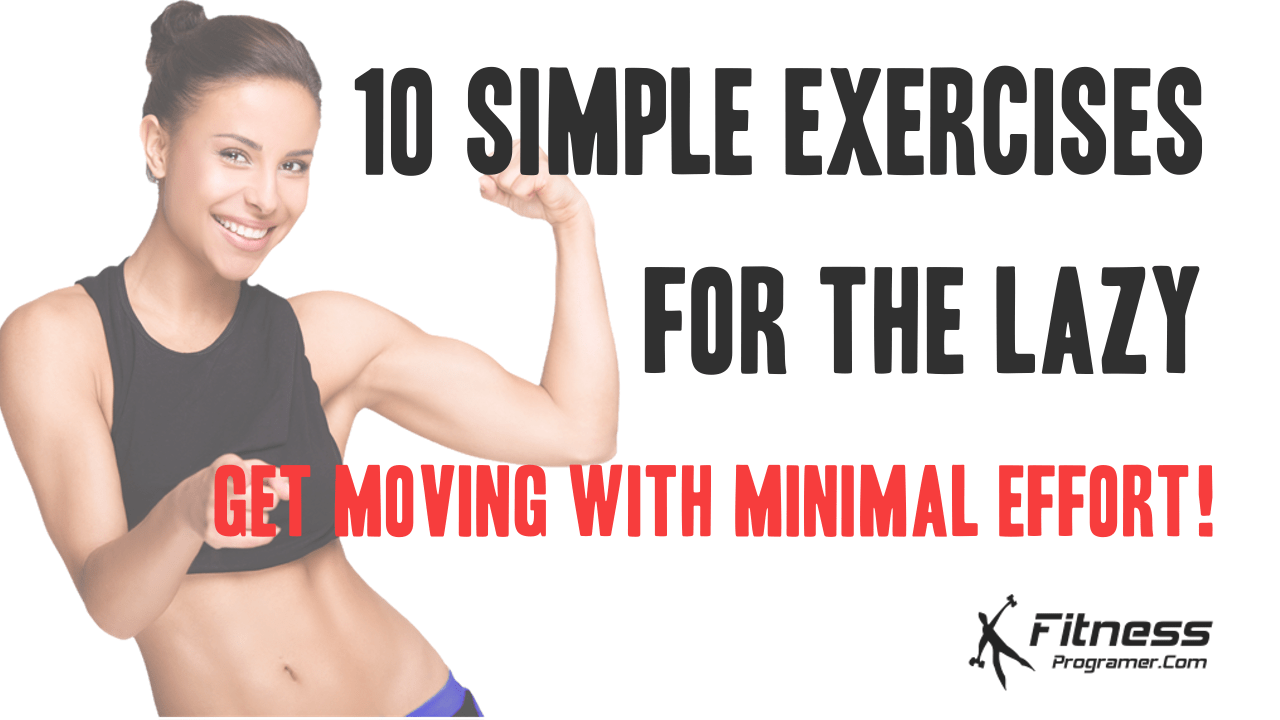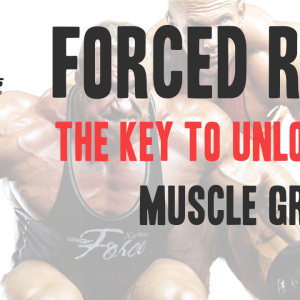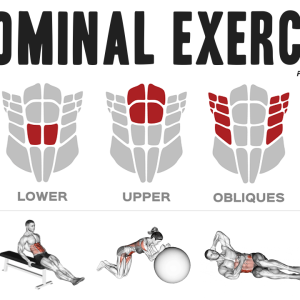Contents
- 1- Walking for the Win
- 2- Stretching: Laziness Meets Flexibility
- 3- Escalate Your Health with Stair Climbing
- 4- Desk Exercises for the Office or Home Workspace
- 5- Dancing for the Lazy: Move Your Body and Have Fun!
- 6- Stand Up and Tone: Simple Exercises for Standing Time
- 7- Simple exercises for the lazy: Bicycling
- 8- Yoga and Pilates: Lazy Exercises with a Mindful Twist
- 9- Swim for a great start
- 10- Lazy Strength Training: Easy Ways to Build Muscles
Simple Exercises For Great Health, Fitness And Fun!
Simple exercises for the lazy are exercises that require minimal effort and can be easily incorporated into a daily routine. Simple exercises can be fun and enjoyable too. It doesn’t have to be hard and strenuous. Great examples are walking, dancing, swimming and bicycling, all fun activities to do. Thirty minutes per day of exercising, three days per week can help you feel good and enjoy the health and fitness benefits that come with regular exercise.
When exercising, it is important to pace yourself so that you do not tire quickly. Use your target heart rate to pace yourself. For the first few weeks (or months), start with your lower heart rate target zone and slowly increase towards your higher heart rate target zone, as you feel comfortable. It is a great way to monitor your progress.
The toughest stumbling block to exercising is getting started. And once you’ve started, it is also sometimes hard to stick with it. When you start your exercise program, you have to make a commitment to yourself to be more physically active on a regular basis.
A change in lifestyle from sedentary to physically active can be hard to do, but with enough dedication, it can be done, especially when you realize the major health and fitness benefits of exercising.
To increase your chances of success, make sure you choose an exercise that you will enjoy the most. There are the low impact aerobics to improve overall health, cardiovascular workouts for strengthening the heart muscles, and weights training for developing your muscles and increasing your strength, just to name a few. Do not forget to add flexibility and stretching exercise routines that are necessary to keep your body flexible and well conditioned.
Whatever type of exercise you choose, make sure you do warm-ups before you start and cool-downs at the end to prevent unnecessary muscle injuries. And most importantly, discuss your exercise program with your doctor before starting.
1- Walking for the Win
Walking, a seemingly effortless activity, holds immense power as a low-impact exercise. It not only helps to keep your body active but also provides a range of physical and mental benefits.

- The Benefits of Walking:
- Low-impact exercise: Walking is gentle on the joints, making it suitable for people of all ages and fitness levels.
- Cardiovascular health: Regular walking improves heart health, lowers blood pressure, and reduces the risk of heart disease and stroke.
- Weight management: Walking can aid in burning calories, maintaining a healthy weight, and supporting overall fitness goals.
- Mood booster: Walking releases endorphins, promoting feelings of happiness and reducing stress and anxiety.
- Enhanced creativity: Research suggests that walking can stimulate creativity and improve cognitive function.
- Incorporating Walking into Your Daily Routine:
- Start small: Begin with shorter walks and gradually increase the duration as your stamina improves.
- Take walking breaks: Instead of sitting for extended periods, get up and take short walks around your office or home.
- Walk instead of drive: Whenever possible, opt for walking to nearby destinations like the grocery store or a coffee shop.
- Use stairs: Ditch the elevator or escalator and choose stairs as a way to incorporate more walking into your day.
Walking is a fantastic way to embrace a low-impact exercise routine that offers numerous physical and mental benefits. By incorporating walking into your daily routine and finding ways to make it enjoyable, you can effortlessly improve your overall well-being. So, lace up your shoes, step outside, and embark on a leisurely stroll to experience the power of walking for yourself.
2- Stretching: Laziness Meets Flexibility
Stretching is often overlooked but plays a vital role in promoting overall well-being. It not only helps to improve flexibility but also offers a range of benefits for both the body and mind.
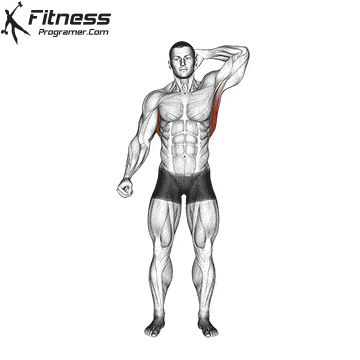
- The Importance of Stretching for Overall Well-being:
- Increased flexibility: Regular stretching improves joint range of motion and enhances overall flexibility, making everyday movements easier and reducing the risk of injuries.
- Improved posture: Stretching targets tight muscles that contribute to poor posture. By lengthening these muscles, stretching helps to align the body properly and reduce muscle imbalances.
- Enhanced circulation: Stretching increases blood flow to the muscles, delivering oxygen and nutrients while aiding in the removal of waste products, promoting better circulation throughout the body.
- Stress relief: Stretching encourages relaxation by releasing tension in muscles and relieving stress. It can also promote a sense of calm and mental clarity.
- Posture improvement: Stretching tight muscles, such as the chest and hip flexors, helps to counteract the effects of prolonged sitting and promotes a more upright and aligned posture.
- Muscle relaxation: Stretching promotes the release of tension and tightness in muscles, reducing feelings of stiffness and promoting relaxation throughout the body.
- Stress reduction: The act of stretching encourages deep breathing and relaxation, which can help to alleviate stress and promote a sense of well-being.
- Easy Stretches for Home or Work:
- Neck stretch: Gently tilt your head to one side, bringing your ear toward your shoulder. Hold for 15-30 seconds on each side.
- Shoulder stretch: Interlace your fingers behind your back and gently lift your arms, feeling a stretch across the chest and shoulders. Hold for 15-30 seconds.
- Hamstring stretch: Sit on the edge of a chair with one leg extended in front of you. Lean forward, reaching towards your toes, while keeping your back straight. Hold for 15-30 seconds on each leg.
- Calf stretch: Stand facing a wall, place your hands on the wall at shoulder height, and step one foot back, keeping it straight. Lean forward, feeling a stretch in the calf of the back leg. Hold for 15-30 seconds on each leg.
- Seated spinal twist: Sit tall in a chair, cross one leg over the other, and gently twist your upper body to the side, using your opposite hand to assist. Hold for 15-30 seconds on each side.
Incorporating stretching into your daily routine is an easy and effective way to improve overall well-being. By regularly stretching, you can increase flexibility, improve posture, enhance circulation, and promote muscle relaxation. Take a few moments each day to perform these easy stretches at home or work, and experience the positive effects stretching has on your body and mind. Remember to listen to your body, breathe deeply, and enjoy the benefits of laziness meeting flexibility through stretching.
3- Escalate Your Health with Stair Climbing
In the pursuit of a healthier lifestyle, we often overlook one of the simplest and most accessible exercises: stair climbing. By choosing stairs over elevators or escalators, we can incorporate a valuable workout into our daily routines.
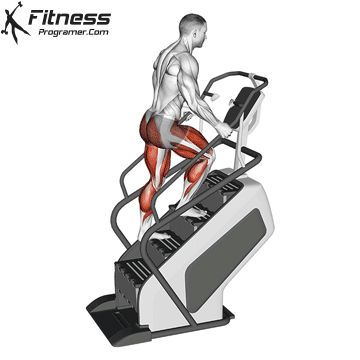
- The Cardiovascular and Lower Body Benefits of Stair Climbing:
- Increased heart rate: Stair climbing elevates your heart rate, providing a cardiovascular workout that strengthens your heart and improves circulation.
- Calorie burning: Stair climbing is a calorie-burning activity that helps with weight management and contributes to overall fitness.
- Lower body strength: The act of climbing stairs engages major muscle groups in the lower body, including the quadriceps, hamstrings, glutes, and calves, leading to improved muscle strength and endurance.
- Bone health: Stair climbing is a weight-bearing exercise that helps strengthen bones and may reduce the risk of osteoporosis.
- Incorporating Stair Climbing into Daily Routines:
- Start small and progress: Begin by taking a flight of stairs instead of an elevator or escalator. Gradually increase the number of flights you climb over time.
- Break it up: Instead of tackling all the stairs at once, break your stair climbing sessions into smaller bouts throughout the day. For example, climb a few flights during breaks or lunchtime.
- Track progress: Use a fitness tracker or smartphone app to monitor the number of steps climbed, calories burned, or flights completed. This can serve as motivation and help you set goals.
- Make it enjoyable: Listen to music or podcasts while climbing stairs to make the activity more engaging and enjoyable.
- Buddy system: Encourage friends, family, or colleagues to join you in taking the stairs. The support and accountability can make it a fun group activity.
By choosing stairs over elevators or escalators, we can elevate our fitness levels and improve our cardiovascular health and lower body strength. Stair climbing is a simple and efficient way to incorporate exercise into our daily routines. Start small, gradually increase your stair climbing efforts, and enjoy the benefits of this accessible and time-efficient workout. So, let’s step up our fitness game by embracing the stairway to a healthier and fitter lifestyle.
4- Desk Exercises for the Office or Home Workspace
For many of us who spend long hours sitting at a desk, finding ways to incorporate physical activity into our workday can be a challenge. However, with deskercise, you can stay active and energized even while seated.
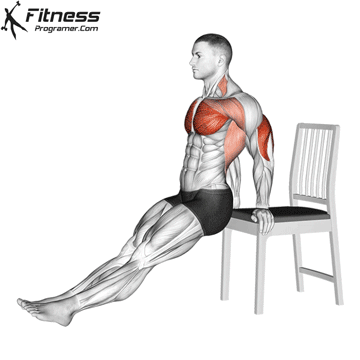
- Keeping the Body Active While Sitting:
- Take regular breaks: Set reminders to get up and move every hour. Use these breaks to stretch, walk around, or perform a quick set of desk exercises.
- Seize opportunities for movement: Stand up and pace while on phone calls, or take short walks to colleagues’ desks instead of sending emails.
- Incorporate active sitting tools: Consider using an exercise ball or an ergonomic chair that promotes movement and engages core muscles while sitting.
- Maintain good posture: Sit with your feet flat on the ground, engage your core muscles, and keep your back straight to avoid slouching and promote better posture.
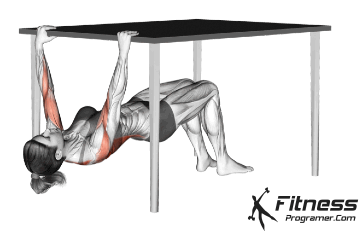
Desk exercises offer a convenient and effective way to stay active and combat the negative effects of prolonged sitting. By incorporating simple exercises like seated leg lifts, shoulder rolls, and neck stretches, you can keep your body engaged and reduce stiffness and discomfort. Remember to take regular breaks, seize opportunities for movement, and maintain good posture throughout the day. With deskercise, you can prioritize your physical well-being and make your office or home workspace a healthier environment.
5- Dancing for the Lazy: Move Your Body and Have Fun!
When it comes to exercise, dancing offers a delightful and enjoyable option, even for the laziest among us. It allows you to move your body, have fun, and reap numerous physical and mental benefits.
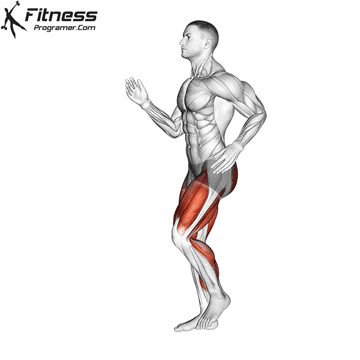
- The Joyful Aspects of Dancing as a Lazy Exercise:
- Fun and self-expression: Dancing allows you to let loose, express yourself, and experience the sheer joy of moving to music without the pressure of intense workouts.
- Stress relief: Dancing acts as a form of stress relief, as it releases endorphins, the body’s feel-good hormones, which can improve your overall mood and reduce anxiety.
- Creativity and exploration: Dancing encourages creativity and self-exploration as you can experiment with different movements, styles, and rhythms that resonate with your body and preferences.
- Calorie-Burning and Mood-Boosting Benefits of Dancing:
- Calorie burning: Dancing is a fantastic cardio exercise that can burn a significant number of calories, helping with weight management and improving overall fitness levels.
- Full-body workout: Dancing engages multiple muscle groups, promoting strength, flexibility, and endurance. It targets your core, legs, arms, and improves overall coordination.
- Mood enhancement: Dancing releases endorphins, promoting feelings of happiness, reducing stress, and increasing self-confidence and body positivity.
- Social connection: Dancing can be a social activity, whether virtually or in person, allowing you to connect with others who share a love for movement and music.
Dancing offers a lazy exercise option that combines joy, self-expression, and numerous physical and mental benefits. With different dance styles that can be enjoyed at home, you can move your body, burn calories, and uplift your mood. So, let the music guide you, unleash your creativity, and embark on a journey of fun and fitness through the power of dancing. Get ready to move, groove, and embrace the sheer pleasure of dancing for a healthier and happier you!
6- Stand Up and Tone: Simple Exercises for Standing Time
Incorporating more standing time into your daily routine can have a significant impact on your overall activity level and fitness. By engaging in simple exercises while standing, you can enhance the benefits of standing and promote leg strength and circulation.

- Encouraging More Standing Throughout the Day:
- Stand while working: If possible, use a standing desk or elevate your laptop to eye level to encourage more standing during office hours or while working from home.
- Take standing breaks: Instead of sitting during breaks or phone calls, stand up and move around. Use these opportunities to perform standing exercises and stretch.
- Incorporate standing into daily activities: Stand while folding laundry, preparing meals, or watching TV. Small adjustments like these can add up to significant increases in standing time.
- Easy Exercises for Standing Time:
- Calf raises: Stand with feet shoulder-width apart and slowly rise onto your tiptoes, then lower back down. Repeat for 10-15 repetitions to strengthen your calf muscles.
- Squats: Stand with feet hip-width apart, lower your body as if sitting back into a chair while keeping your knees aligned with your toes, and then return to a standing position. Aim for 10-15 repetitions to target your quadriceps, hamstrings, and glutes.
- Marching in place: Stand tall, lift one knee toward your chest, then lower it back down. Alternate legs and continue marching for 30-60 seconds to engage your leg muscles and increase heart rate.
By incorporating simple exercises into your standing time, you can maximize the benefits of standing and promote leg strength and circulation. Remember to engage in exercises like calf raises, squats, and marching in place to target different muscle groups and increase activity levels. Standing more throughout the day not only enhances your fitness but also improves posture, balance, and overall well-being. So, stand up, get moving, and enjoy the rewards of standing exercises for a stronger, healthier you!
7- Simple exercises for the lazy: Bicycling
Bicycling is another excellent exercise option for the lazy. It offers a low-impact and enjoyable way to stay active while enjoying the outdoors.
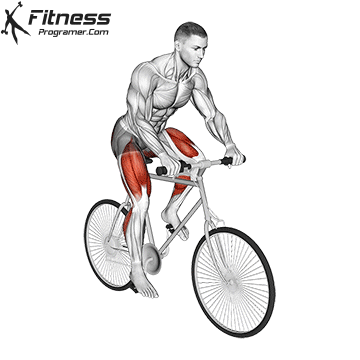
Here’s why bicycling is a simple exercise for the lazy:
- Minimal effort, maximum enjoyment: Bicycling allows you to effortlessly glide through the streets or scenic paths, making it an enjoyable activity without feeling like a strenuous workout.
- Convenient transportation: You can incorporate bicycling into your daily routine by using it as a mode of transportation. Ride your bike to work, run errands, or explore your neighborhood, combining exercise with practicality.
- Low-impact on joints: Unlike high-impact exercises, bicycling is gentle on your joints, reducing the risk of injury and making it suitable for individuals with joint pain or conditions like arthritis.
- Cardiovascular fitness: Bicycling is an excellent aerobic exercise that gets your heart pumping, improving cardiovascular health and endurance.
- Muscle toning: Cycling engages various muscle groups, including the legs, core, and glutes, helping to strengthen and tone these areas over time.
- Customizable intensity: You can adjust the intensity of your biking session based on your fitness level and preferences. Whether it’s a leisurely ride or a more challenging hill climb, you have control over the effort you put in.
- Stress reduction and mood boost: Bicycling outdoors allows you to soak up nature, enjoy fresh air, and experience the mood-boosting benefits of sunlight, all of which can help reduce stress and improve mental well-being.
Remember to prioritize safety by wearing a helmet, obeying traffic rules, and choosing appropriate biking routes. Whether it’s a leisurely ride or a more adventurous biking excursion, bicycling offers a simple and enjoyable way for the lazy to stay active and reap the many benefits of regular exercise.
8- Yoga and Pilates: Lazy Exercises with a Mindful Twist
Practicing yoga or Pilates at home offers a perfect blend of physical activity and mindfulness, making it an ideal choice for lazy exercisers. With their simplicity and accessibility, yoga and Pilates allow you to engage in gentle movements and poses while incorporating a mindful twist.
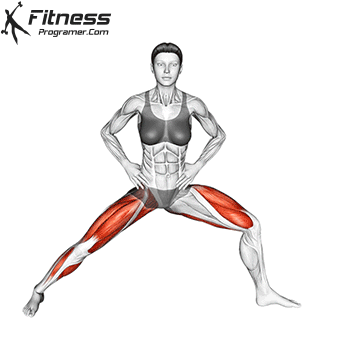
- Simplicity of Practicing Yoga or Pilates at Home:
- Minimal equipment: Yoga and Pilates can be practiced with minimal equipment, making them ideal for home workouts. A yoga mat and comfortable clothing are often all you need to get started.
- Flexibility in scheduling: You have the freedom to practice at any time that suits you, allowing for flexibility in incorporating these exercises into your daily routine.
- Availability of online resources: A plethora of online tutorials, videos, and mobile apps provide guided instruction, making it easier than ever to learn and practice yoga or Pilates from the comfort of your home.
- Beginner-Friendly Poses and Movements:
- Yoga: Start with foundational poses such as Mountain Pose (Tadasana), Child’s Pose (Balasana), Downward-Facing Dog (Adho Mukha Svanasana), and Cat-Cow Pose (Marjaryasana-Bitilasana).
- Pilates: Begin with exercises like the Hundred, Roll-Up, Single Leg Stretch, and Bridge, which focus on core strength, flexibility, and body control.
- Mind-Body Connection and Stress-Relieving Benefits:
- Mindfulness and relaxation: Both yoga and Pilates emphasize mindful movement, deep breathing, and focused awareness, promoting relaxation, stress reduction, and a sense of calm.
- Improved flexibility and strength: Regular practice of yoga or Pilates can lead to increased flexibility, improved posture, and enhanced overall strength, particularly in the core muscles.
- Enhanced body awareness: These practices encourage you to pay attention to your body, aligning movements with breath and cultivating a greater understanding of your physical self.
- Balancing energy: Yoga and Pilates help balance energy levels, leaving you feeling refreshed and rejuvenated after each session.
Yoga and Pilates offer a wonderful blend of lazy exercises with a mindful twist, making them accessible and beneficial for both the body and mind. Practicing at home allows you to experience the simplicity of these exercises, while beginner-friendly poses and movements provide a gentle introduction. By embracing the mind-body connection and stress-relieving benefits of yoga and Pilates, you can enhance your overall well-being and enjoy the peace and tranquility that these practices bring. So, roll out your mat, find your center, and embark on a journey of self-discovery through the simplicity and mindfulness of yoga and Pilates.
9- Swim for a great start
Swimming is an excellent option for lazy individuals looking for a simple and effective exercise.
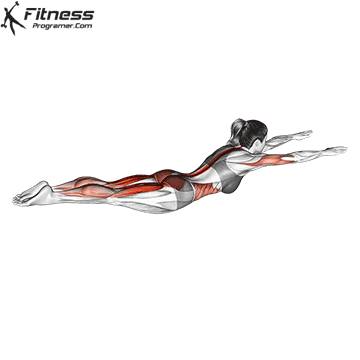
Here’s why swimming is a great choice:
- Low-impact workout: Swimming is a low-impact exercise that puts minimal stress on your joints, making it suitable for people of all ages and fitness levels. It allows you to work out without straining your body.
- Full-body workout: Swimming engages your entire body, providing a comprehensive workout. It works your arms, legs, core, and back muscles, helping to build strength and improve muscle tone.
- Cardiovascular fitness: Swimming is a fantastic aerobic exercise that gets your heart pumping and improves cardiovascular endurance. It helps strengthen your heart and lungs, promoting better overall fitness.
- Weight management: Swimming is an effective calorie-burning activity. It helps you burn a significant number of calories, making it beneficial for weight management and maintaining a healthy body composition.
- Joint relief and flexibility: The buoyancy of water reduces the impact on your joints, making swimming an ideal exercise for those with joint pain or injuries. It also promotes flexibility as you move through the water, enhancing your range of motion.
- Cooling and refreshing: Swimming is a perfect exercise during hot weather as it helps you stay cool while working out. It provides a refreshing and invigorating experience, especially during the summer months.
- Mental well-being: Swimming has a calming and meditative effect on the mind. The rhythmic movements and soothing water create a sense of relaxation, reducing stress and promoting mental well-being.
- Variety of strokes: Swimming offers a variety of strokes to choose from, such as freestyle, backstroke, breaststroke, and butterfly. You can switch between strokes to add variety to your workouts and target different muscle groups.
- Suitable for all fitness levels: Whether you’re a beginner or an experienced swimmer, you can tailor your swimming routine to your fitness level. You can start with leisurely laps and gradually increase the intensity and duration of your workouts.
- Social and recreational: Swimming can be a social and recreational activity, whether you swim with friends, join a water aerobics class, or participate in swimming competitions. It adds a fun and social element to your exercise routine.
10- Lazy Strength Training: Easy Ways to Build Muscles
Building muscle doesn’t have to be an arduous task. With lazy strength training, you can incorporate simple exercises into your routine that require minimal effort but deliver significant results.
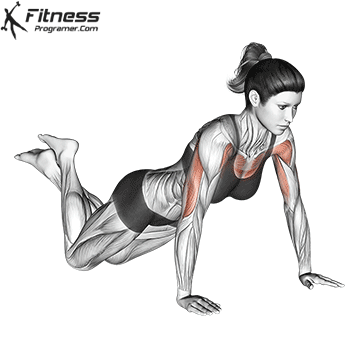
- Basic Strength-Training Exercises:
- Resistance bands: These portable and inexpensive tools can be used to perform a variety of exercises targeting different muscle groups. Incorporate exercises like bicep curls, tricep extensions, and lateral raises to build upper body strength.
- Dumbbell exercises: If you have access to dumbbells, you can perform exercises like dumbbell squats, shoulder presses, and bent-over rows to engage multiple muscle groups and promote strength development.
- Bodyweight exercises: By using your own body weight, you can effectively build strength. These exercises require no equipment and can be performed anywhere, anytime.
- Examples of Bodyweight Exercises:
- Push-ups: This classic exercise targets the chest, shoulders, triceps, and core muscles. Start with modified push-ups by resting your knees on the ground if regular push-ups are challenging.
- Squats: Squats work the lower body muscles, including the quadriceps, hamstrings, and glutes. Perform squats by bending your knees and lowering your hips as if sitting back into an imaginary chair.
- Planks: Planks engage the core muscles, promoting stability and strength. Begin with a modified plank on your knees and gradually progress to a full plank position, resting on your toes and forearms.
- Importance of Strength Training for Muscle Mass and Bone Health:
- Muscle maintenance: As we age, muscle mass naturally declines. Strength training helps preserve and build muscle, which is vital for maintaining mobility, stability, and overall functionality.
- Bone health: Strength training places stress on the bones, stimulating the production of new bone tissue and reducing the risk of osteoporosis and fractures.
- Metabolic benefits: Building muscle through strength training can increase your metabolism, promoting calorie burn and supporting weight management goals.
- Joint support: Strengthening the muscles around your joints can help improve joint stability, reducing the risk of injuries and enhancing overall joint health.
Lazy strength training offers a straightforward approach to building muscle and reaping the benefits of strength development. Incorporating basic exercises like bodyweight movements, resistance bands, or dumbbell exercises requires minimal effort but can yield significant results. By engaging in strength training, you can maintain muscle mass, support bone health, boost metabolism, and enhance joint stability. So, embrace lazy strength training as a simple yet effective way to build muscles, improve overall strength, and enhance your overall well-being.
Conclusion:
Being lazy doesn’t mean you can’t stay active. By embracing lazy exercises and incorporating them into your lifestyle, you can reap the benefits of physical activity without exerting excessive effort. Find joy in the simplicity of these exercises, make them a habit, and explore different activities to keep things interesting. Remember, even small amounts of movement and activity can make a significant difference in your overall health and well-being. So, embrace your laziness and discover the pleasure of staying active with minimal

